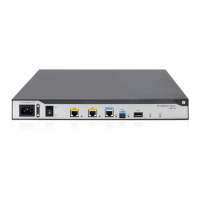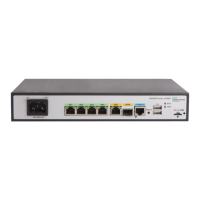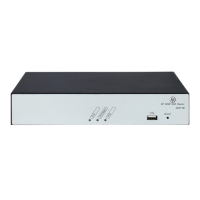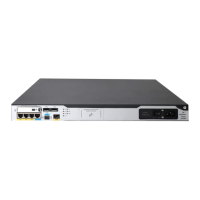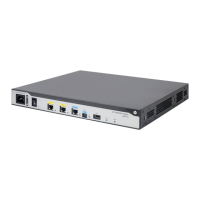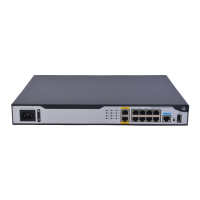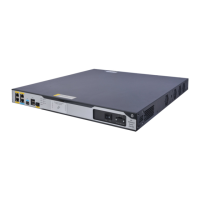25
To negotiate the use of short sequence numbers on a dialer MP bundle, configure the command on the
dialer interfaces and the ISDN D channels. To negotiate the use of short sequence numbers on a
common MP bundle, use the command on all its channels. Note that the command will cause PPP
re-negotiation.
To configure short sequence number header format negotiation for MP:
Ste
Command
Remarks
1. Enter system view
system-view N/A
2. Enter interface view.
interface interface-type
interface-number
N/A
3. Trigger MP short sequence number
header negotiation, specifying that
the interface receive fragments with
short sequence numbers after the
negotiation succeeds.
ppp mp short-sequence
By default, long sequence
number header format
negotiation is performed.
Configuring the MP endpoint descriptor
When MP is configured by using a VT interface, an MP endpoint makes link binding decisions based on
the remote endpoint descriptors. It assigns the links that receive the same endpoint descriptor to the same
bundle. To avoid incorrect link binding on a VT interface, make sure the link descriptors used by different
devices are unique. You must re-configure an endpoint descriptor for a device if the default endpoint
descriptor (device name) cannot uniquely identify the MP bundle at the remote end.
When MP is configured by using an MP-group interface, the negotiating endpoints do not base their
binding decisions on the endpoint descriptor. By default, the endpoint descriptor of an interface in an
MP-group is the MP-group interface name. When you configure an endpoint descriptor for the interface,
the configured MP endpoint descriptor takes effect.
If the endpoint descriptor exceeds 20 bytes, the first 20 bytes are taken as the endpoint descriptor.
To configure the MP endpoint descriptor of an interface for LCP negotiation:
Ste
Command Remarks
1. Enter system view.
system-view N/A
2. Enter interface view.
interface interface-type
interface-number
N/A
3. Configure the MP endpoint
descriptor.
ppp mp endpoint endpoint N/A
Configuring LFI
Real-time packets, such as Telnet and VoIP packets, might be blocked or delayed on a low-speed
interface.
To reduce delays and jitters on low-speed links, LFI fragments large packets into small fragments. The
fragments are reassembled at the destination.
Figure 2
illustrates the LFI process. When large packets and small voice packets arrive at a
WFQ-enabled interface, LFI performs the following operations:
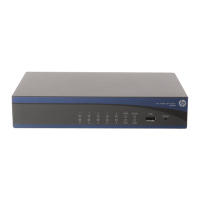
